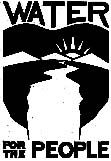
1st Water for the People
NORTHERN LUZON Convention
24-26 November, 2004
Benguet State University, La Trinidad, Benguet
WATER
SOURCES IN NORTHERN LUZON CRITICAL
Water is a vital element for our continuing survival. But our water sources
and facilities in Northern Luzon are in a CRITICAL condition.
The people of the Cordillera mountains and the Cagayan valley, which
cradle the watersheds as well as the headwaters of major rivers, are now
confronted with a multitude of issues and problems relating to water.
So are the people who occupy the river valleys and coastline of the Ilocos
region.
All the major rivers of northern Luzon are afflicted by siltation due
to several factors. The longest of these rivers, the Rio Grande de Cagayan,
is silted up because intensive logging has denuded the forests and induced
excessive soil erosion from slopes and riverbanks upstream. Intensive
logging, along with commercial farming, has also deforested the watersheds
of the Agno and Abra rivers.
The logging has been done in connection with large mining. Large mining
itself is the primary source of the sediments that have silted up the
Agno and the Abra.
Some of the sediments that line the Agno and the Abra are toxic in nature.
They have come from mine tailings dams installed along the Agno’s
tributaries and on the Abra itself. Water discharged from these tailings
dams is also toxic. It contains the poisons cyanide, arsenic, and mercury,
and extremely high concentrations of dissolved heavy metals like copper,
zinc, and lead.
The construction of large hydropower or irrigation dams on the Agno,
the Rio Chico de Cagayan, and the Magat are another reason for the siltation
of these rivers: interfering with the natural flow of the waters, the
dams have accumulated sediments in large volumes.
Despite forest denudation, Northern Luzon is still abundant with water
sources. Yet hundreds of its communities lack access to safe potable water.
Twenty-five percent (25%) of the Cordillera population and 88% of the
Ilocos population do not have water piped to their homes but must fetch
this from springs or common wells.
The supply of water clean enough for use in agriculture and fisheries
is likewise insufficient. In the Cordillera and Ilocos regions, farmers
are often unable to produce a second crop of rice because of the lack
of irrigation.
Meanwhile, fisherfolk have to grapple with the problem of private enclosure
of up to 15% of the Ilocos region’s coastal waters by large-scale
operators of fishpens and fishcages.
All across northern Luzon, vital water sources used by communities for
generations are now under threat of privatization by corporations and
wealthy individuals whose main motive is to profit from the exploitation
of resources that ought to remain in the public domain.
Increasing urbanization and tourism are taxing these resources and spurring
privatization moves. The perennial shortage of water for Baguio city’s
growing population has impelled the local water district to seek a private
bulk water supplier. Benguet Corporation is the sole surviving bidder
for the bulk water supply contract. If successful, it will appropriate
the water sources of agricultural communities in the towns surrounding
Baguio.
Many citizens of Baguio, however, believe that raiding their neighbors’
water supplies would be totally unnecessary if their city government and
the local water district were to attend properly to the rehabilitation
of existing facilities and watersheds.
The foregoing water-related concerns are brought about by the implementation
of national policies and programs that promote unregulated resource extraction
and privatized delivery of basic public services.
It is in this context that we have organized the 1st Water for the People
NORTHERN LUZON Convention. This activity aims to bring together more than
100 representatives of communities, NGOs, the academe, the church, employees
of water utility firms, government officials, and other sectors for a
three-day seminar on water-related issues. There will be presentations
on the water situation of the three regions of Northern Luzon, namely
Ilocos, Cagayan, and the Cordillera, following a presentation on the National
Water Situation by the Water for All Network-Philippines.
The presentations will be followed by workshops on various themes such
as pollution, privatization of water utilities and resources, mining and
water, agriculture and fisheries, dams and other hydropower infrastructure,
plus water-related disasters. The workshops are expected to generate interactive
presentation of experiences and ideas on how water issues ought to be
addressed.
The last day of the gathering will focus on advocacy planning and networking
with the theme, “Water for all!. We are hoping that this will lead
to a sustained Northern Luzon campaign on water issues that will be linked
with the national Water for All campaign.
The activity also serves as a follow-through of the National People’s
Convention on Water held in Quezon City in August this year. #
Organizers:
Cordillera Peoples’ Alliance
ÁPIT TAKÓ (Alyánsa dagiti Pesánte iti Taéng
Kordilyéra)
STARM (Save the Abra River Movement)
STOP-EX (Solidarity of Peasants against Exploitation) – Ilocos
IBON Foundation, Inc.
Reference person:
Ms. Joan Carling
Chairperson
Cordillera Peoples’ Alliance
|

